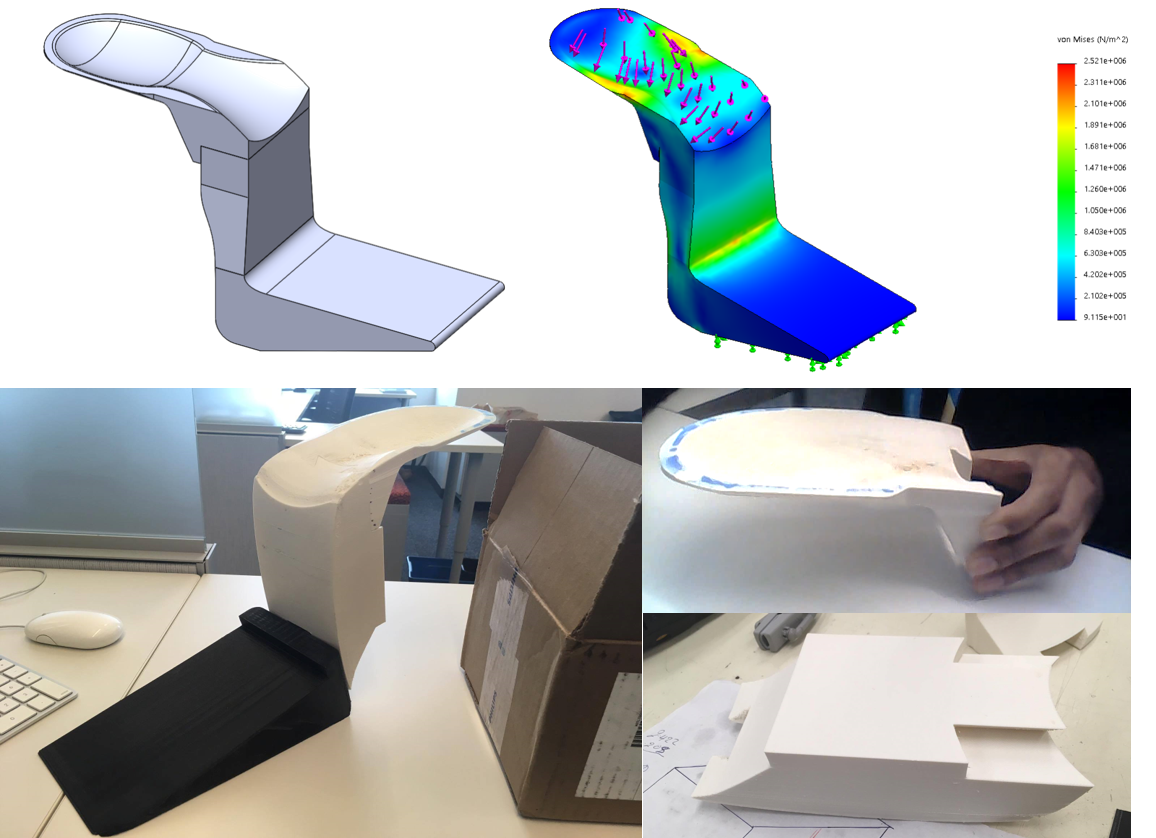Origami Cranes
| Test | Material | Thickness (mm) | Layer (mm) | Hinge Design | Other | Observations |
|---|---|---|---|---|---|---|
| 1 | PLA | 0.6 | 0.2 |
0.2 mm thickness 1 mm wide hinges 2.5 mm relief holes at fold intersections Folds assume 0 mm thickness |
Material is brittle. Folds involving multiple layers snap | |
| 2 | PLA | 0.3 | 0.1 |
0.2 mm thickness 1 mm wide hinges 2.5 mm relief holes at fold intersections Folds assume 0 mm thickness |
Material is brittle. Folds involving multiple layers snap but less | |
| 3 | PLA | 0.6 | 0.2 |
Cut pattern (similar to compliant wood hinge) 2.5 mm relief holes at fold intersections Folds assume 0 mm thickness |
Hinges are compliant but cut pattern results in poor edge aesthetics | |
| 4 | PLA | 0.6 | 0.2 |
0.2 mm thinner section 1.2–1.8 mm wide hinges 2.5 mm relief holes at fold intersections Folds offset to account for material thickness where able |
Material is brittle. Folds involving multiple layers snap but later than Test 1. Offsetting hinges results in tighter folds where there are >2 layers | |
| 5 | PLA | 0.6 | 0.2 |
0.2 mm thinner section 1.2–1.8 mm wide hinges 2.5 mm relief holes at fold intersections Folds offset to account for material thickness where able |
Folded in hot water | Same as Test 4. Folding in hot water prevents hinges from snapping |
| 6 | PETG | 0.6 | 0.2 |
0.2 mm thinner section 1.2–1.8 mm wide hinges 2.5 mm relief holes at fold intersections Folds offset to account for material thickness where able |
Same geometry as Test 4. PETG is more ductile at room temperature compared to PLA, but hinges still snap | |
| 7 | PLA | 0.6 | 0.2 |
0.2 mm thinner section 1.2–1.8 mm wide hinges 2.5 mm relief holes at fold intersections Folds offset to account for material thickness where able |
Concentric top layers (instead of monotonic) Folded in hot water |
Different print orientation results in better overhang quality in some regions and worse quality in others |
| 8 | PLA | 0.48 | 0.16 |
0.2 mm thinner section 1–1.8 mm wide hinges 1.8 mm relief holes at fold intersections (some removed) Folds offset to account for material thickness where able |
Folded in hot water | Relief holes are very beneficial, reducing joint rigidity and aiding assembly. Reducing layer height results in worse overhangs for hinges |
| 9 | PLA | 0.6 | 0.1 |
0.2 mm thinner section 1–2 mm wide hinges 1.8 mm relief holes at fold intersections Folds offset to account for material thickness where able |
Folded in hot water | Reduced layer height did not have significant impact on overhang quality |
| 10 | PCL | 0.6 | 0.2 |
0.2 mm thinner section 1–2 mm wide hinges 1.8 mm relief holes at fold intersections Folds offset to account for material thickness where able |
Folds well at room temperature. Overhangs look ugly but are functional. Iterated for printability; material is prone to jamming | |
| 11 | PCL | 0.6 | 0.2 |
0.2 mm thinner section 1–2 mm wide hinges 1.8 mm relief holes at fold intersections Folds offset to account for material thickness where able |
Reduced overhang speed by 40% Flipped part in Z so bottom surface is visible after folding |
Print orientation introduces more overhangs, resulting in worse hinge quality. Still functional but aesthetically worse at hinges |

Leviosa
Robotic Arm
This is a personal project to create a low-cost robotic arm for testing control systems and path planning workflows. To minimize cost, stepper motors paired with a harmonic gearbox providing a -29:1 gear reduction is used at the base. Additionally, the stepper motor for the second joint acts as a counterweight due to its location on the arm. Currently, I am working on building the first prototype and writing firmware on Arduino. I plan to use this project as a platform for learning about control systems, algorithms, and robotics as a whole.
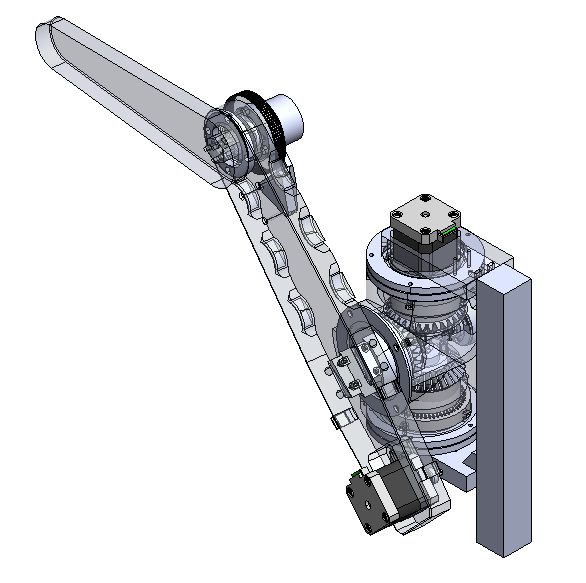
Capstone: CSA STRATOS balloon separator
Space or near-space technologies provide unique perspectives of our world. Due to the high cost of rockets, many technologies are tested using high altitude balloons, like the one’s employed in the Canadian Space Agency’s STRATOS program. Our objective was to design and build a separator to detach the balloon from the remainder of the flight train at the end of the flight. This device is planned to be in use in 2022.

Kaggle
I was first introduced to machine learning (ML) through my first lab experience, where my colleagues were using ML algorithms to detect epilepsy. Since then, my curiosity for the subject has led me to complete several MOOCs on the subject, and begin participating in Kaggle competitions.
Cassava Leaf Disease Competition
I competed in the Cassava Leaf Disease Competition. The task outlined involves the classification of Casava images into four diseases categories or a fifth healthy plant category. Due to the computationally expensive nature of this task and the limited dataset, tensor processing units (TPUs) and transfer learning were used. At the moment my algorithm has an accuracy of 89.1% (the top accuracy on the leaderboard is 90.6%), though I am hoping to impove this by ensembling and exploring different algorithms. My notebooks containing the associated code can be accessed here.
Probe validation
I am working with Professor John Welsh to validate a high channel-count probe that measures extracellular electrophysiology of the cerebellar cortex. The goal of the project is to use these probes to further our understanding of how biological neural networks function. We are currently working to validate the technology on nice - thus far, I have written scripts to pre-process the neural data, detect and sort neural spikes, determine spike correlation between sensors, and mapping relationships between the granular and molecular layers of the brain.
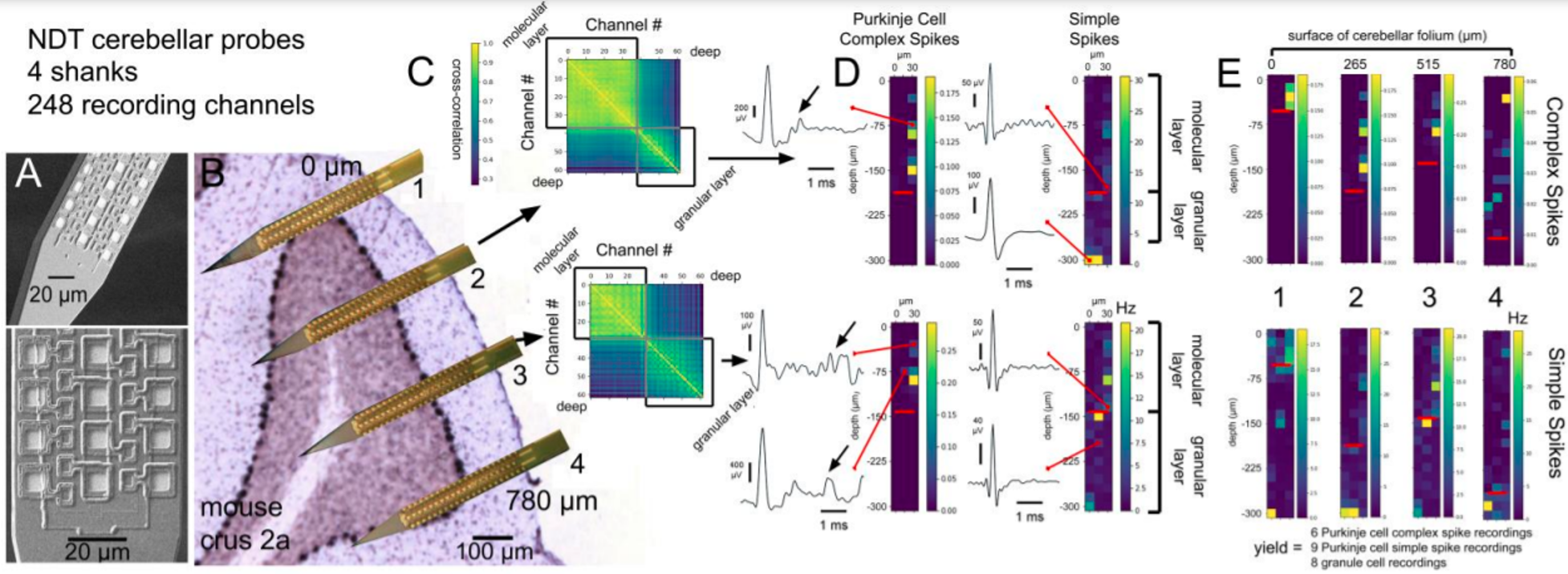
A. Micrographs of NDT cerebellar probes. B. 4 probes (62 sites/probe) deliver 248 recording sites to mouse crus2a. C. Cross-correlation matrices of oversampled spikes (probes 2, 3) reveal 2 regions of correlated activity separated at a depth corresponding to the molecular/granular layer interface. D. Waveform separation in the molecular layer identifies Purkinje cell complex and simple spikes and granule cell spikes below. E. Location of spike types on the full array. (Wijaya, Cheung, Welsh)
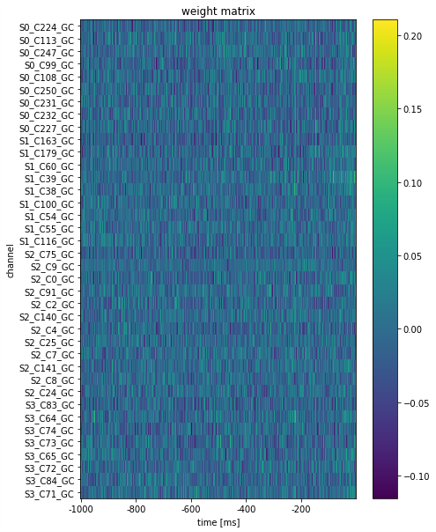
Weight matrix for the relationship between activations in the past 1 second in granular layer and a molecular layer cell.
Mechanical Hand
I have taken it on myself to design and build a mechanical hand with the same degrees of freedom as a human hand. I have completed the mechanical design of the component and now I am working with a friend to 3D print the components and integrate the electronics, control scheme and actuators.
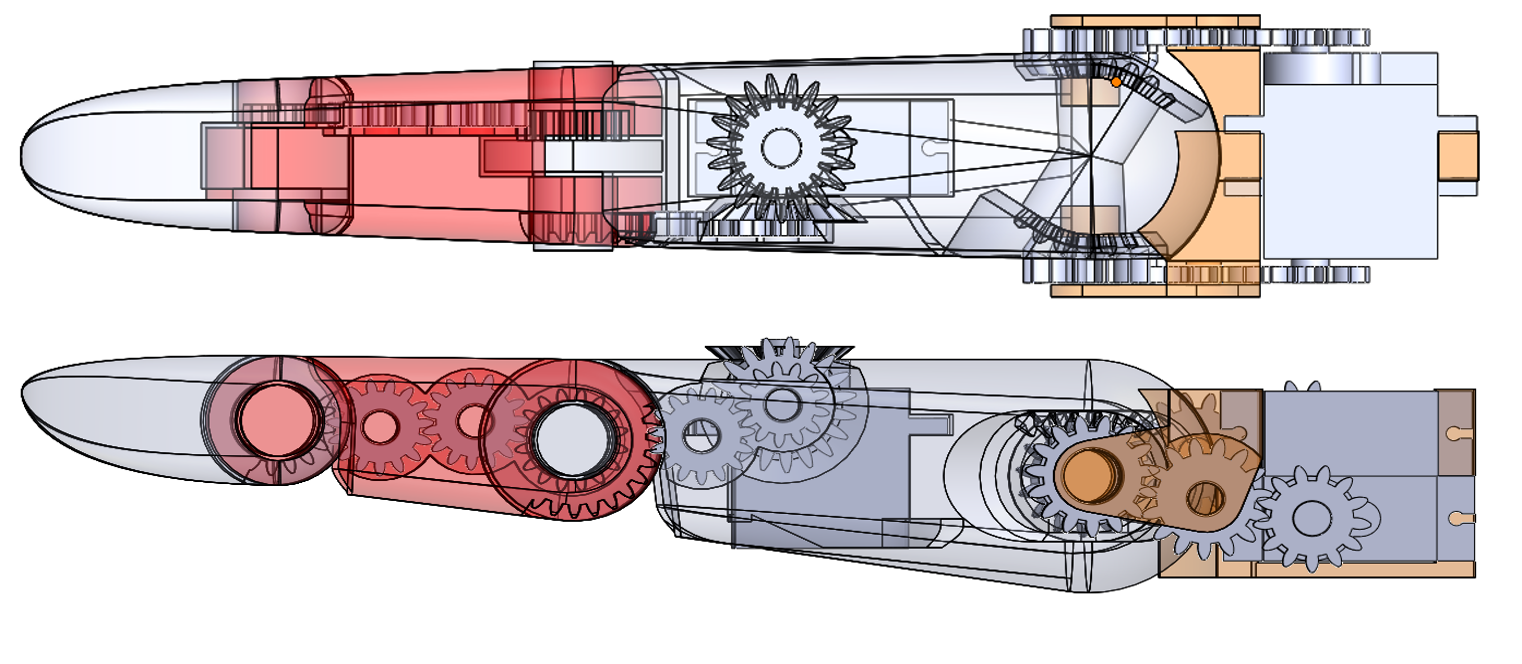

Advanced AERO McGill Design Team
We participated in the SAE Aero Design competition. I was a part of the Advanced team over several years, fulfilling the roles of as a sub-team leader, VP logistics, and co-captain over these years.
In my first two years, I was the fuselage sub-team lead and led the designing and manufacture the fuselage of the aircraft. Note that majority of aircraft was constructed by laser-cutting balsa and plywood.
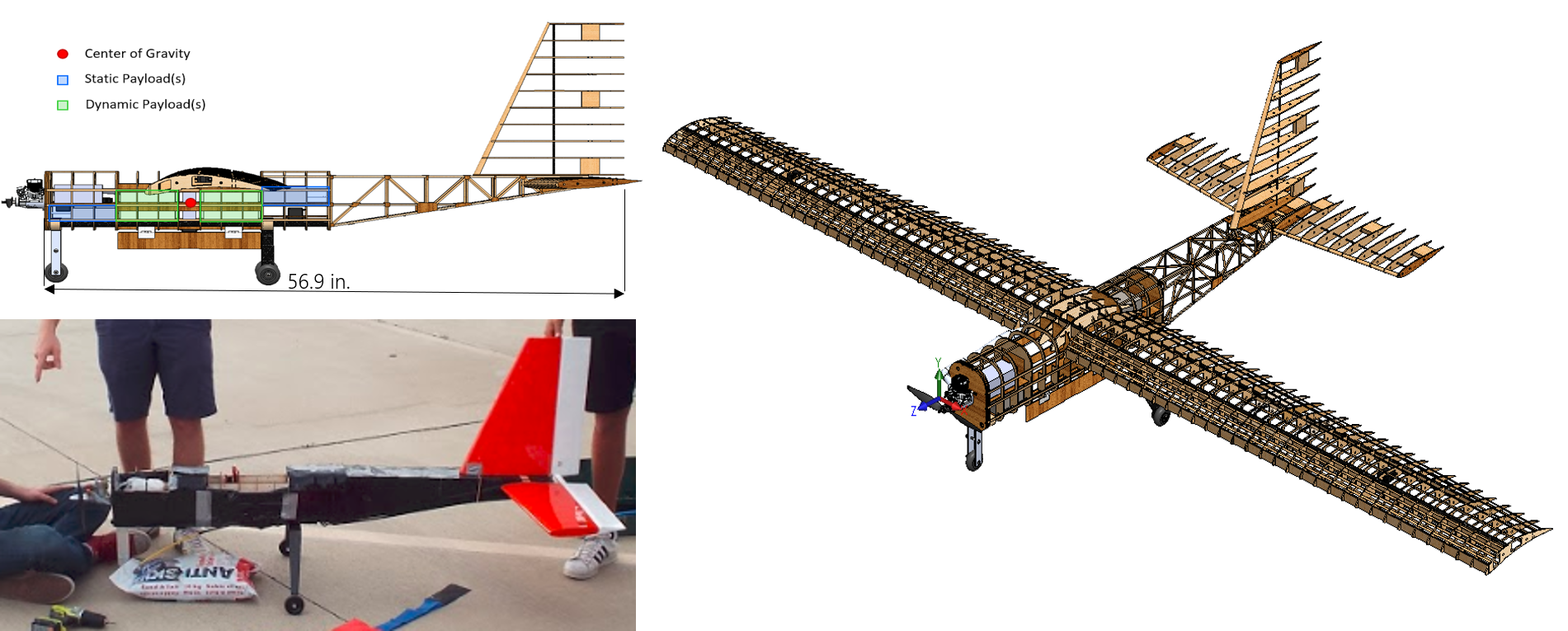
My second year design focused heavily on the concept of modularity to ensure easy manufacture and assembly of the aircraft.
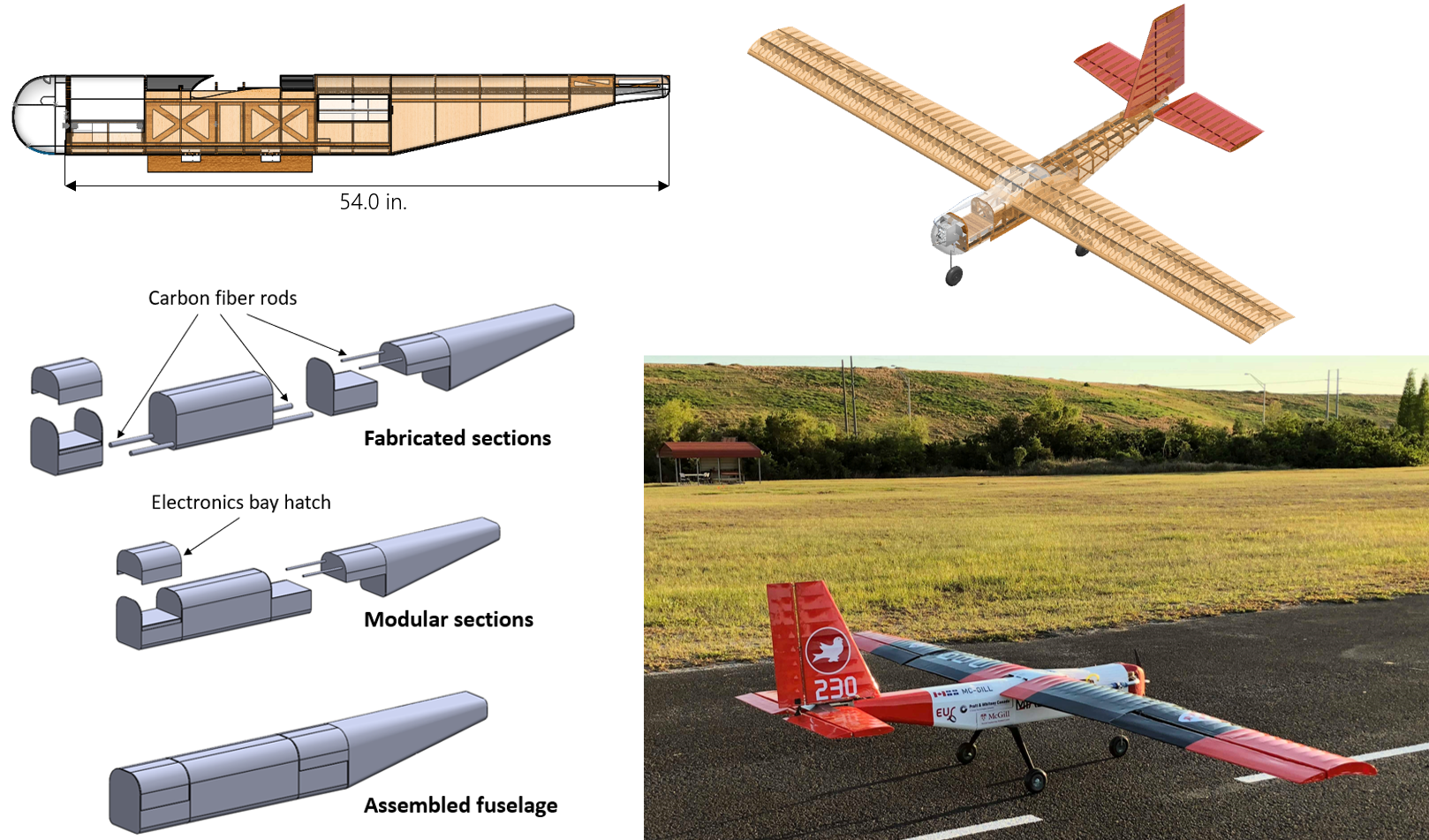
Following that, I served as the co-captain of the team, guiding design and construction of the vehicle, specifically focusing on the blended wing-body concept. We also investigated the possibility of using a foam construction (rather than balsa) to speed up construction.
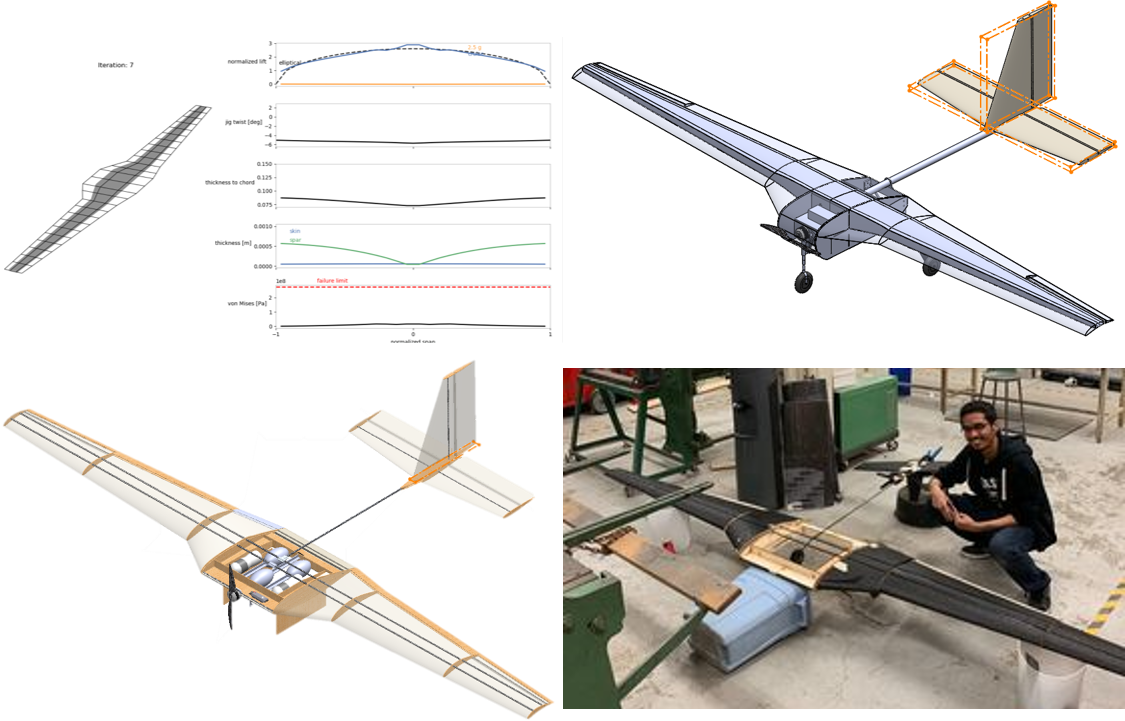
Optically Pumped Magnetometer (OPM) “Helmet” System
OPMs are a new brain imaging technology that is able to measure magnetic brain activity without the requirement of cryogenic cooling. This permits sensors to be placed very close to the patient, improving signal-to-noise ratio. I was involved with this project for two years.
In the first year and part of the second year, I developed an experimental setup to compare these OPM sensors directly to the 275 sensor CTF superconducting quantum interference devices (SQUID) based MEG system used at ImageTech. This involved coding a script to generate a sensor array that exactly mimicks the SQUID system. Testing was done using a magnetic dipole, and results showed similar positioning accuracy to the SQUID system. I had the opportunity to participate at OHBM 2018 - my poster can be accessed here.
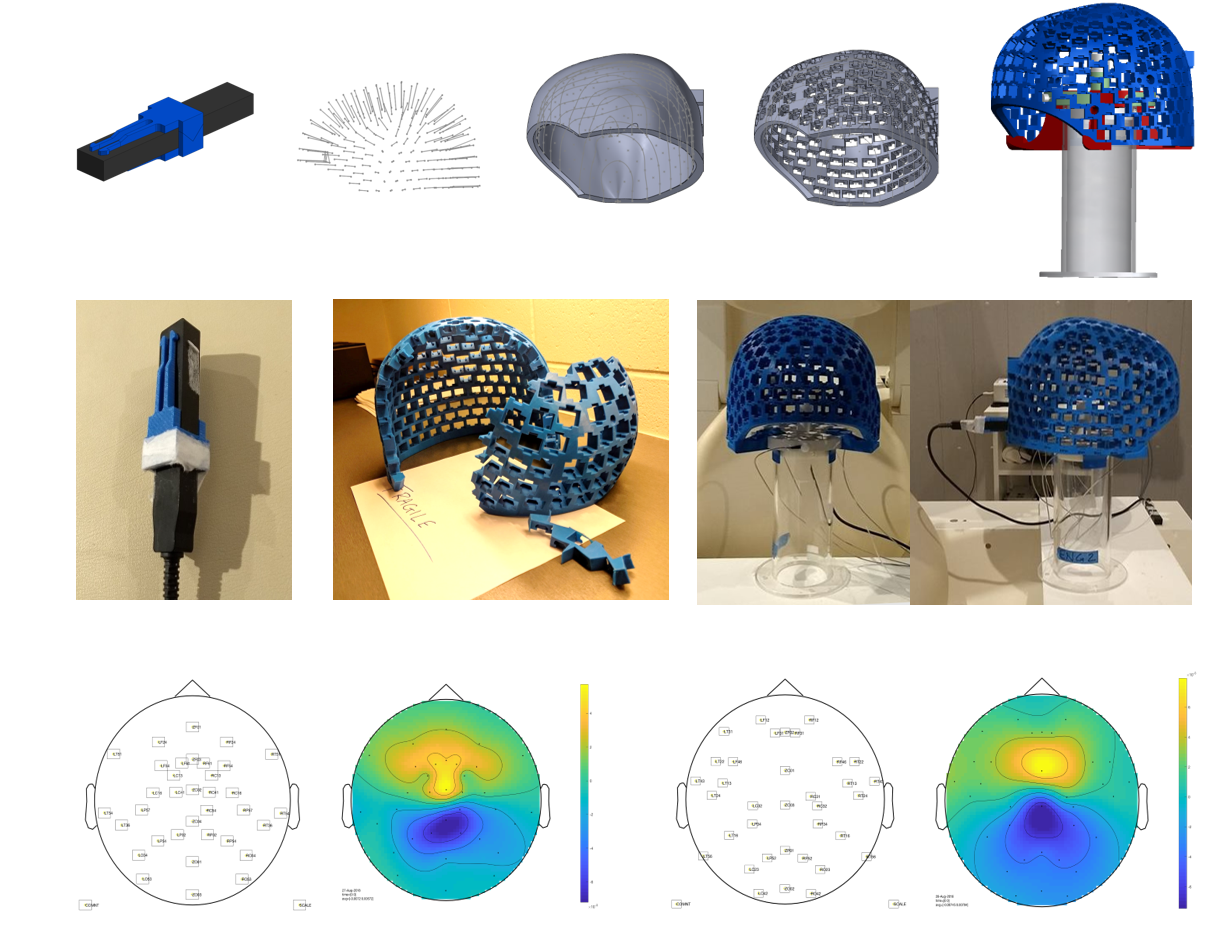
In my second year working in the lab, I wrote a script to automatically generate a customized OPM array for patients - this increases signal-to-noise ratio. The workflow I designed first took as input either polhemous scan data or scalp segmentation, that output geometric data that then went through my SolidWorks VBA script to generate the sensor array.
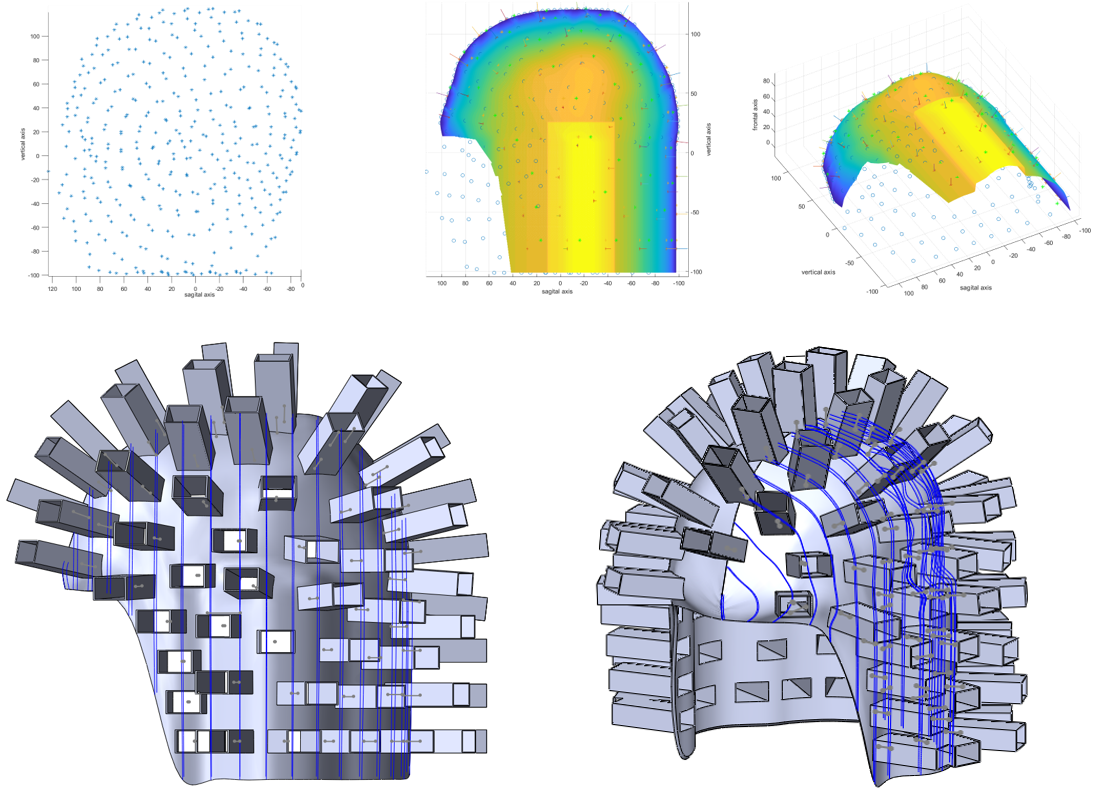
Additionally, I explored the possibility of using coils to provide active magnetic shielding. In the image below, the rectangles show the position on the coils, while the differently collored point clouds show isomagnetic regions.

Cervical Spine Coregistration
Shortcomings in data collection can be mitigated by co-registering data from different technologies. For this project, I was tasked with designing a sensor array that can be used to co-register Magnetoencephalography (MEG) Optically Pumped Magnetometer (OPM) which have high temporal resolution and low spatial resolution with MRI, which has high spatial resolution and low temporal accuracy. This project necessitated the development of a protocol for the co-registration of anatomical landmarks to MEG OPM data of the spinal column, to provide information on the relative position of the spinal column in relation to the sensors. As the spinal structure is very mobile, a system is required to predict or prevent changes between positions during or between MRI and MEG OPM scans. Several designs were proposed and built.
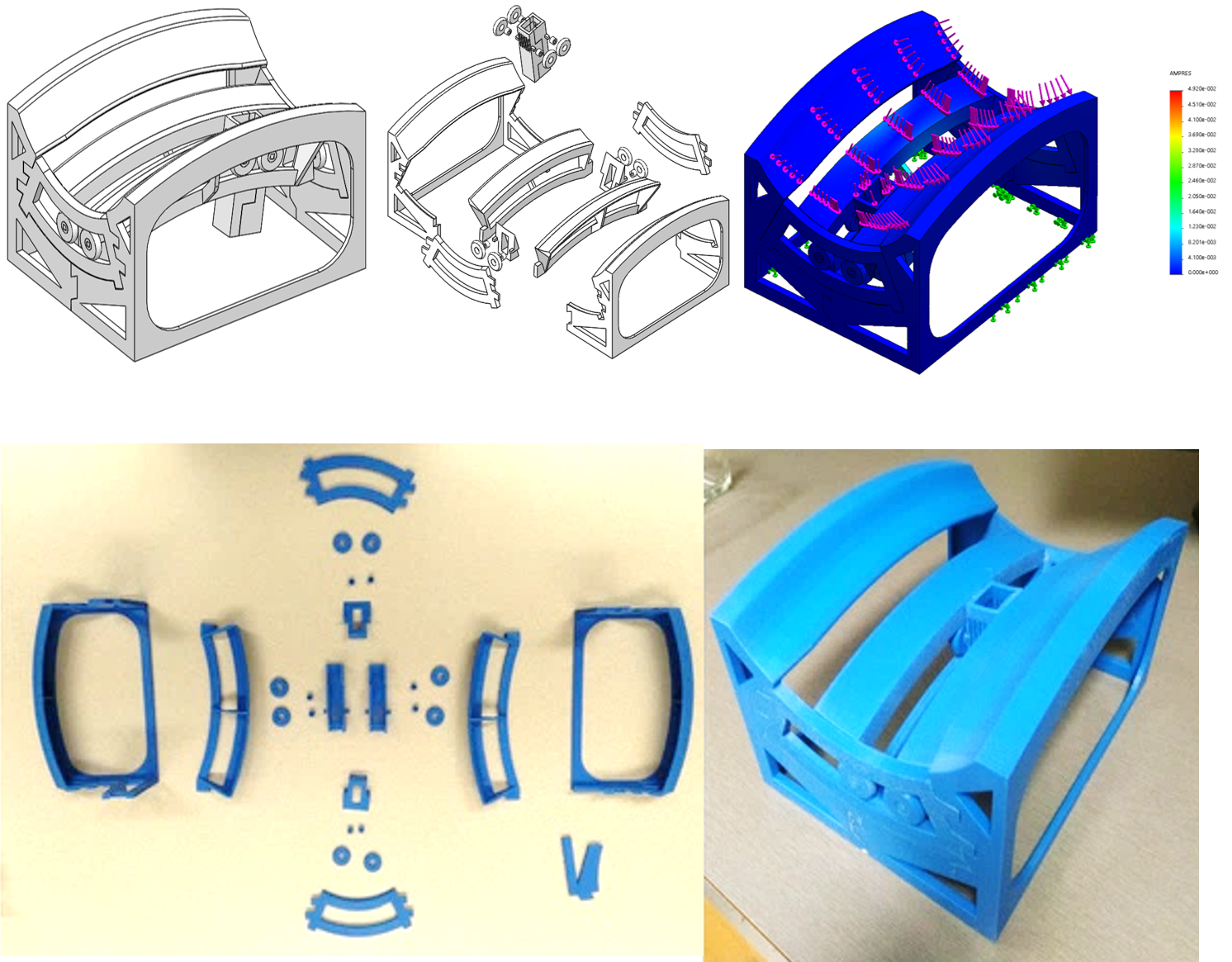
CTF Magnetoencephalography (MEG) Head Stabilization
In order to better secure young patients who may have a history of seizure, a headrest component needed to be designed for the CTF MEG. I designed this head stabilization device, creating the CAD and running FEA simulations. This design was printed by the U of T lab affiliated with Sick Kids.
